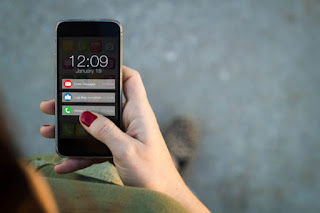 |
Increase engagement with your APP users and drive conversions |
From smartphones to smart homes to smart TVs, it seems we’re in the age of smart. More people than ever before own a smartphone, and they’re spending more time using them. On average, smartphone owners will access their devices anywhere from 2,617 times per day, according to Business Insider. Let that sink in for a moment.
Products are smart. They know what people like, what they engage with and their everyday habits. How does your push notification plan shape up against your product? How personal are you getting with your customers?
 However, the current approach among app owners is more aligned with “blast and go” instead of a thorough understanding of analysis and using the data available. Push notifications are messages that deliver to a smartphone user’s home screen.
However, the current approach among app owners is more aligned with “blast and go” instead of a thorough understanding of analysis and using the data available. Push notifications are messages that deliver to a smartphone user’s home screen.
They’re successful because they can be permission-based and targeted. An app user must opt in for push notifications, and their actions provide data that gives in-depth targeting capabilities. At the mobile level, there’s a great depth of information on customer preferences, habits, likes and dislikes.
If open or sale rates fluctuate or uninstalls go through the roof as a result of your marketing messages, here are some tools and tactics to kick it up a gear:
Individualization that drives interaction
Mobile success is all about the individual. We look to individualization to drive revenue with targeted offers. When we talk about conversions or mobile interactions, we are talking about influencing and persuading the customer.
First impressions count, and a push notification is make-or-break. For mobile app users, they expect clean, succinct and tailored interactions. Stick with catchy titles. Keep character counts low and calls to action strong and action-oriented. Your customers might be in the middle of something when they receive your notification, so it’s important that content is snappy and easy to read.
Segmentation of customers by their interests and behaviors is the next logical step for push notifications. Segmentation means you can group app users together by their app activity. Instead of using their name in an attempt to personalize a message, you can apply it to their behavior. We’ve seen this in sports-betting apps. A single push notification results in a 300 percent increase in bets due to smart send times, context and content, according to Element Wave.
Use behavioral data to add context to your push notifications. For example, customers like targeted offers based on their shopping habits. Use this information to deliver tailored reminder notifications when favorite items go on sale or when items are added to their shopping carts.
Make a mark with automation
An opportunity to improve KPIs with push notifications arrives with automation. Marketing automation takes the grunt work out of many labor-intensive tasks, leading to greater reporting capabilities, scalability and individualization across channels, especially on mobile. The possibilities for automating CRM processes on mobile are limitless.
App journeys are a real possibility with mobile marketing automation. Automation triggers new campaigns on the completion of an app action or a push notification tap. By automating cross-sells, upsells, follow-ups and reminders, your customer lifetime value increases.
Automation makes your marketing channel-agnostic. Multichannel campaigns become holistic user experiences instead of list-based manual efforts. Each strategic step depends on preparation and incorporating best-practice principles. When you have the basics covered, you can start to get creative with your marketing goals.
Analysis to drive engagement
Today, there is constant access to an ever-evolving data set. Marketers are in a coveted position as they gather incredible quantities of data from mobile users. It’s a matter of implementing and using it. Analytics help you understand what it is your customers want from your app and your business.
The evolution is an opportunity to evolve and tweak push notifications to best reflect customers’ needs and wants. Analysis grows at scale with automation, too. One of the benefits is you can study personalization preferences of customers by A/B or C testing headlines, calls to action or any other app-related event.
Use analysis to build customer profiles or cohorts based on purchase history, loyalty information, usage preferences or the app events most important to your bottom line.
The next step
In theory, push notifications are simple: Write some copy, send it out and see the engagements rack up. In practice, they’re a lot smarter, more subtle and resonate for far longer. The nature of push means that when the messages are right, they’re unforgettable and compel action. When done wrong, they become spam and can damage the relationship between the brand and the customer.
Technology is changing quickly. Staying smart, innovating and analyzing your customers’ mobile behavior means you’ll always be ready for the next step.
Source


EmoticonEmoticon